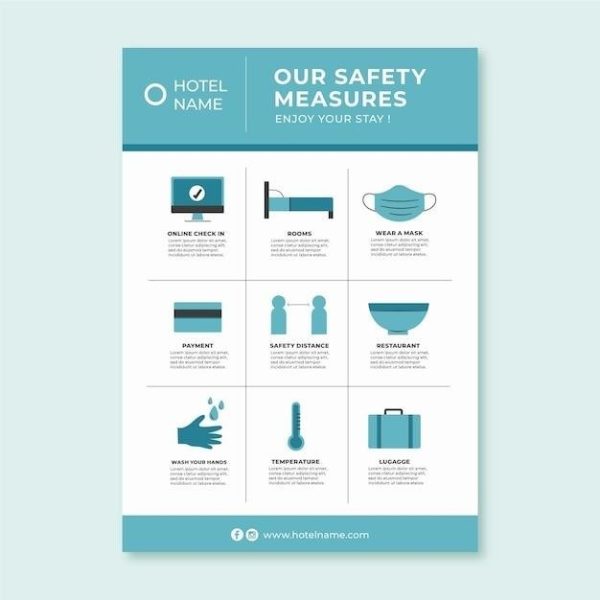Uniden DECT 6 Manual⁚ A Comprehensive Guide
This comprehensive guide provides a detailed explanation of the Uniden DECT 6 phone, covering its features, setup, usage, troubleshooting, and advanced settings․ It also explores security and privacy considerations, DECT 6 compatibility, and resources for support․ Whether you’re a new user or a seasoned veteran, this manual will equip you with the knowledge you need to maximize your Uniden DECT 6 experience․
Introduction to DECT 6 Technology
DECT 6, or Digital Enhanced Cordless Telecommunications version 6․0, is a widely adopted standard for cordless phone communication․ It offers significant advancements over earlier DECT versions, providing enhanced security, improved sound quality, and greater range․ DECT 6 employs sophisticated digital encryption to protect conversations from eavesdropping, ensuring privacy and confidentiality․ It also leverages advanced digital signal processing to deliver clear, crisp audio, minimizing interference and noise․
The DECT 6 standard is particularly prevalent in the United States, where it has become the preferred choice for cordless phone manufacturers․ It offers a more secure and reliable digital protocol than traditional analog cordless phones, which are susceptible to signal interference and interception․ DECT 6’s robust encryption and digital signal processing make it a highly secure and reliable communication technology․
In addition to its security and audio quality advantages, DECT 6 also boasts a wider range than older DECT versions․ This extended range allows for greater flexibility in placement and use, enabling users to roam around their homes or offices without losing signal strength․ DECT 6’s combination of advanced security, improved sound quality, and extended range makes it a superior choice for modern cordless phone communication․
Uniden DECT 6 Phone Features
Uniden DECT 6 phones are renowned for their comprehensive feature set, designed to enhance communication convenience and functionality․ These phones typically include a range of features, such as caller ID, call waiting, call forwarding, and voicemail capabilities․ Caller ID displays the incoming caller’s phone number, allowing users to identify calls before answering․ Call waiting alerts users to incoming calls while they are already on a call, enabling them to manage multiple conversations effectively․
Call forwarding allows users to redirect incoming calls to another phone number, ensuring that calls are not missed while they are away from their primary phone․ Voicemail provides a convenient way to receive and manage messages when users are unable to answer calls․ These features make Uniden DECT 6 phones well-suited for both personal and professional use, providing users with the tools they need to stay connected and manage their communications efficiently․
Many Uniden DECT 6 phones also feature hands-free speakerphone capabilities, allowing for convenient hands-free conversations․ Some models may also include additional features like call blocking, which helps users filter out unwanted calls, and intercom functionality, allowing for communication between phones within the same household․ The specific features available may vary depending on the particular model of Uniden DECT 6 phone, so it’s important to consult the user manual for detailed information on the features included․
Setting Up Your Uniden DECT 6 Phone
Setting up your Uniden DECT 6 phone is a straightforward process that can be completed in a few simple steps․ First, locate the base station and connect it to a power outlet․ Ensure that the base station is placed in a central location within your home or office, as this will optimize signal strength and reception․ Next, insert the phone line into the appropriate port on the base station․ This port is typically labeled “Line” or “Telephone․” Once the base station is connected to power and the phone line, it will begin to power up and initialize․
Now, you can pair the handset with the base station․ This process usually involves pressing a specific button on both the handset and the base station․ The exact pairing procedure may vary slightly depending on the specific model of Uniden DECT 6 phone․ Consult the user manual for detailed instructions․ After pairing, you can program the phone with your preferred settings․ This includes setting up caller ID, call waiting, and other features․ You can also customize the phone’s ringtone and other personal preferences․ Once the setup is complete, you can begin using your Uniden DECT 6 phone to make and receive calls․
For those unfamiliar with the process, the user manual typically provides detailed instructions and illustrations to guide users through the setup process․ It’s recommended to carefully review the manual before attempting to set up the phone․ If you encounter any difficulties during the setup process, consult the manual for troubleshooting tips or contact Uniden customer support for assistance․
Using the Phone’s Features
The Uniden DECT 6 phone boasts a range of features designed to enhance your communication experience․ Making and receiving calls is the core function, but the phone also offers additional functionalities like caller ID, call waiting, and call forwarding․ Caller ID displays the number of the incoming call, allowing you to identify the caller before answering․ This feature is particularly helpful in filtering unwanted calls or recognizing legitimate contacts․ Call waiting enables you to receive a second call while already on a conversation․ This allows you to hold the first call and answer the incoming call, providing you with more flexibility in managing your calls․
Call forwarding allows you to redirect incoming calls to another number․ This is useful if you are expecting an important call while away from your main phone line․ The phone may also offer additional features such as intercom functionality, allowing you to communicate between handsets within the same system․ You can also use the phone to access voicemail, check missed calls, and manage your call history․ Some models may even include a built-in answering machine for capturing messages when you are unavailable․ The user manual provides detailed instructions on how to access and utilize each of these features, allowing you to customize your phone’s functionality to suit your specific needs․
Familiarizing yourself with these features will help you make the most of your Uniden DECT 6 phone․ Remember to refer to the user manual for specific instructions and guidance on utilizing each feature․ With its user-friendly interface and comprehensive feature set, the Uniden DECT 6 phone provides a reliable and convenient communication solution for your home or office․
Troubleshooting Common Issues
While the Uniden DECT 6 phone is designed for reliable performance, you may encounter occasional issues․ Understanding common problems and their solutions can help you quickly resolve any difficulties․ One common issue is poor sound quality․ This could be due to interference from other electronic devices, a weak signal, or a faulty handset․ Ensure your phone is placed in a location with minimal interference, and check the battery levels of the handset․ If the problem persists, consider replacing the handset battery or contacting Uniden support for assistance․ Another issue is dropped calls․ This could be caused by a weak signal, interference from other devices, or a problem with the base station․
To troubleshoot dropped calls, ensure your phone is within the range of the base station and that there are no obstacles blocking the signal․ You may also need to adjust the settings on the base station to improve signal strength․ If the issue persists, check for software updates for your phone or contact Uniden support for further guidance․ You may also encounter issues with pairing the handset to the base station․ This could be due to low battery levels on the handset, interference from other devices, or a faulty base station․ Ensure the handset is fully charged and within range of the base station․ You can also try restarting both the handset and the base station to resolve pairing issues․
If you are experiencing persistent issues, refer to the user manual for specific troubleshooting steps․ If the problem persists, contact Uniden support for further assistance․ They can provide guidance on troubleshooting common issues, offer technical support, or recommend further actions if necessary․ With a little troubleshooting, you can ensure your Uniden DECT 6 phone continues to operate smoothly and provide you with reliable communication․
Advanced DECT 6 Settings
Delving into the advanced settings of your Uniden DECT 6 phone allows you to tailor its functionality to your specific needs and preferences․ One key setting is call forwarding․ This feature allows you to redirect incoming calls to another phone number, either directly or when your primary line is busy or unanswered․ You can configure call forwarding settings in the phone’s menu, specifying the desired forwarding number and conditions․ Another advanced feature is call waiting․ This enables you to receive a notification when a second call comes in while you’re already on a call․ You can choose to answer the second call, put the first call on hold, or decline the second call․ This feature enhances your call management capabilities, ensuring you don’t miss important calls․
You can also customize the ringtone for each handset, selecting from a variety of built-in options or uploading your own custom ringtones․ This personalization adds a touch of individuality to your phone system․ Additionally, you can manage call blocking, preventing unwanted calls from reaching your phone․ You can configure a blacklist of specific numbers or utilize a “do not disturb” mode to silence calls during designated periods․ These advanced features enhance your privacy and control over your phone system․ Further customization options include setting up call timers to limit the duration of calls, enabling voice prompts for easier navigation, and configuring the phone’s answering machine with personalized greetings and recording options․
By exploring these advanced settings, you can fine-tune your Uniden DECT 6 phone to meet your specific communication needs and preferences․ These features empower you to manage calls efficiently, enhance privacy, and personalize your phone experience․
Security and Privacy Considerations
DECT 6 technology is designed with security and privacy in mind, offering features to safeguard your conversations and personal information․ The digital encryption employed by DECT 6 ensures that calls are transmitted securely, making it difficult for unauthorized individuals to intercept or eavesdrop on your conversations․ This encryption safeguards your privacy by preventing unwanted access to your calls․ Additionally, DECT 6 phones often incorporate features like call blocking and caller ID to further enhance your privacy and security․ Call blocking allows you to block unwanted calls from specific numbers, preventing them from reaching your phone․ Caller ID displays the incoming caller’s number, enabling you to screen calls before answering and avoid unwanted contacts․
It’s crucial to prioritize security and privacy by regularly updating your phone’s firmware․ Software updates often include security patches that address vulnerabilities and enhance the overall protection of your phone system․ Regularly changing your phone’s default password is another essential step in protecting your privacy․ It’s advisable to choose a strong password that is difficult to guess and avoid using common or easily accessible information․ Moreover, be cautious about connecting your phone to public Wi-Fi networks, as these networks may not be secure․ It’s recommended to use a secure and trusted network for your DECT 6 phone to ensure the safety of your communications․
By implementing these security and privacy practices, you can enhance the protection of your conversations and personal information while using your Uniden DECT 6 phone․ These measures help safeguard your privacy and ensure a secure communication experience․
DECT 6 Compatibility and Interoperability

DECT 6, also known as GAP (Generic Access Profile), is a widely adopted standard for cordless phones, ensuring compatibility and interoperability between different brands and models․ This means that you can typically use DECT 6 handsets from various manufacturers with your Uniden DECT 6 base station․ However, it’s essential to note that while most DECT 6 phones are compatible, some features might not be fully supported across all brands․ For instance, advanced features like call forwarding or call waiting may have variations in implementation depending on the manufacturer․ It’s always advisable to consult the user manuals of both the base station and the handset to confirm compatibility and understand any potential limitations․
DECT 6 compatibility also extends to accessories and expansion modules․ You can often expand your Uniden DECT 6 system by adding extra handsets or accessories that are compatible with the DECT 6 standard․ This allows you to customize your phone system to suit your specific needs and preferences․ However, ensure the accessories or expansion modules are compatible with your Uniden DECT 6 base station before purchasing them․ Refer to the base station’s manual or check the product descriptions of the accessories to ensure compatibility and avoid any issues․
The interoperability of DECT 6 phones provides flexibility and convenience, allowing you to choose from a wide range of handsets and accessories to create a customized phone system․ However, it’s crucial to be aware of potential variations in feature support and ensure compatibility before making any purchases․ By understanding the compatibility and interoperability aspects of DECT 6, you can create a seamless and efficient phone system that meets your needs and preferences․



